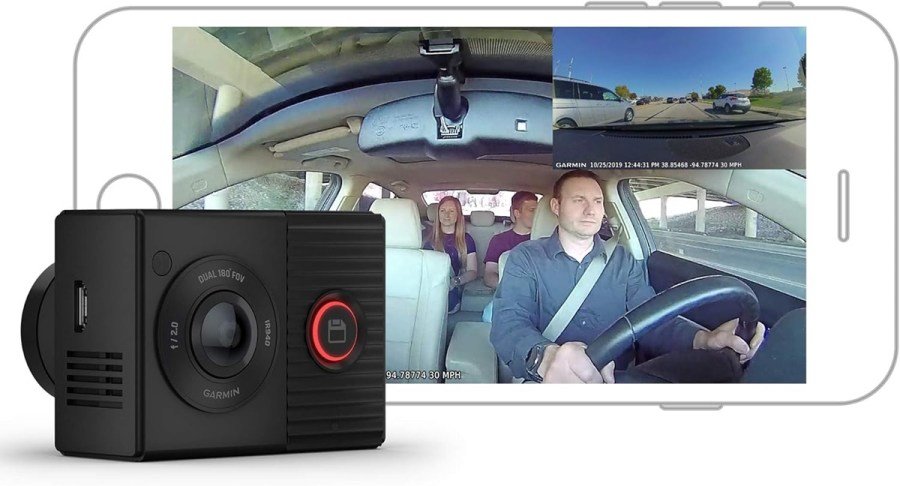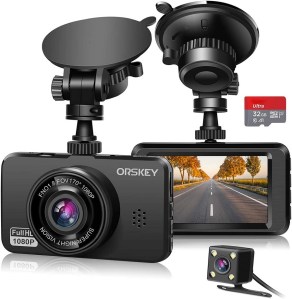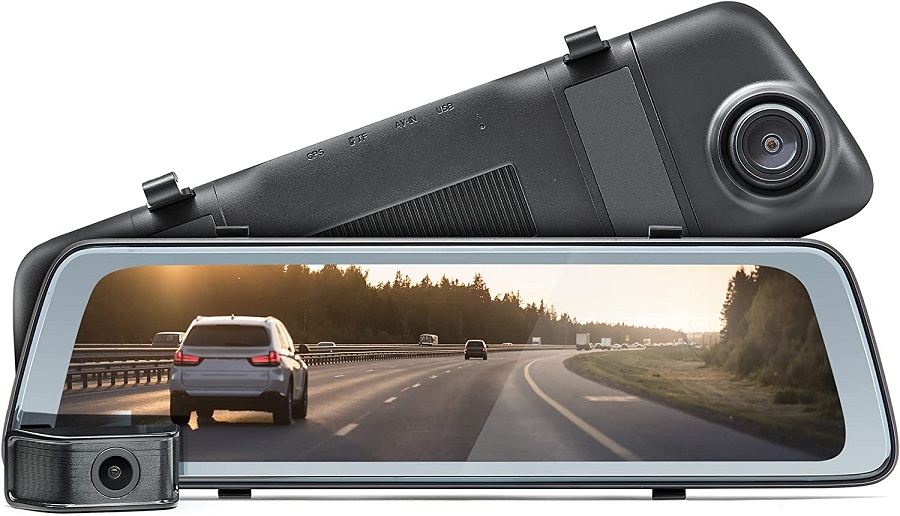From crash scams to inattentive drivers, dual car cameras give you legal protection from all sorts of hazards on the road. Here’s some of the best on the market.
We’ve all seen those YouTube videos of crazy Russian dash cam footage, but insurance scams, crashes, and road rage aren’t things that are just reserved for abroad. More and more drivers in the Western world are taking up interior-mounted cameras too, so if you’re thinking of joining them, perhaps consider some of these.
Dual car camera systems offer both front and rear-facing cameras within one setup, and therefore offer the ultimate service when it comes to multi-angle protection. Some will simply look out the front and rear windows, but others offer a view inside the car too. In this list, I’ve included a mixture of both.
How we chose the products
I’ve tested some of the products mentioned below and deemed them worthy of making this shortlist. However, those that we haven’t tried out first-hand are here based on their spec sheet, price, and my understanding of what makes a good dash cam.
How we tested the products
When conducting tests on some of the products below, it was important that I was able to give a well-rounded overview of what it’s like to own each one. That meant covering the installation process as well as how they perform. You can read all about the finer details in each specific review, which I’ve linked below each camera if they’re available on the site.
Having conducted all of Fast Car’s dash cam tests and reviews so far, I’m well-placed to make recommendations like this based on how I feel each brand and model stacks up against each other.
Best Dual Car Cameras
At a glance:
- Thinkware X1000 – RRP: $299.00, buy now. £269.00, buy now.
- Nextbase 622GW – RRP: $399.99, buy now. £269.00, buy now.
- Orskey CameraCore Front & Rear – RRP: $69.99, buy now. £79.99, buy now.
- Garmin Tandem Compact – RRP: $299.99, buy now. £299.99, buy now.
- Road Angel Halo View – RRP: £199.99, buy now. Not available in the US.
- How to buy the best camera for you
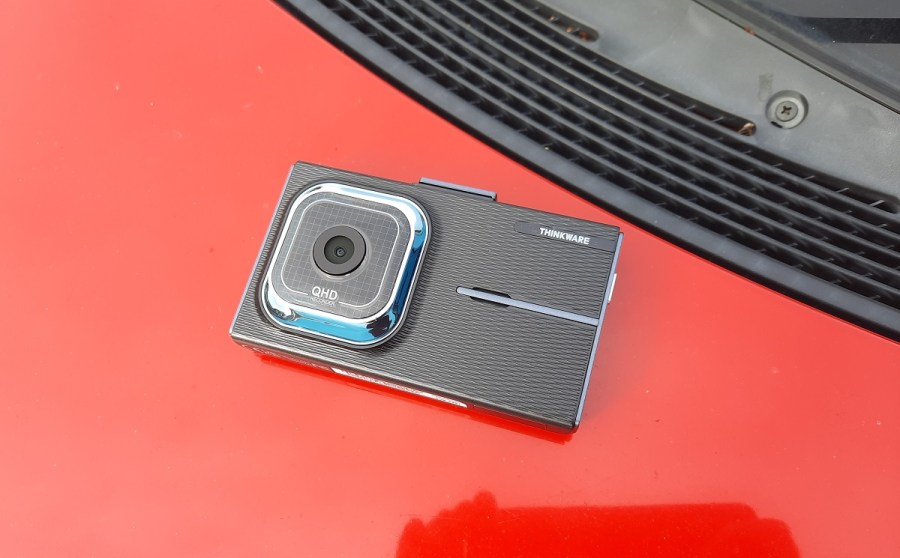
Thinkware X1000
RRP: $299.00, buy now. £269.00, buy now.
Admittedly, I forgot to include the accompanying small rear camera in the shot above – but trust me, the X1000 is indeed a dual package. And a pretty good one at that! What I really like about it is that both the front-facing and rear-facing cameras record in the same resolution, which is a bit of an odd rarity in the dash cam world. And that doesn’t mean they’ve sacrificed the quality either. Both cameras record in 1440p at 30fps. Both also have a wide-angle 156-degree lens, helping you to record as much of the environment as possible without the image becoming distorted. To read more about the X1000, have a read of my in-depth review of it.
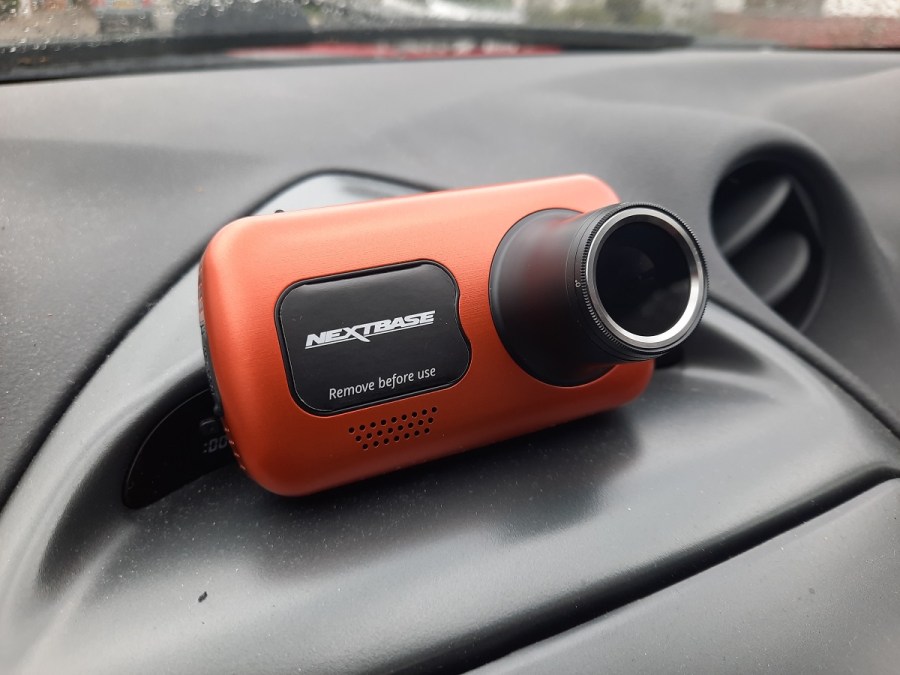
Nextbase 622GW
RRP: $399.99, buy now. £269.00, buy now. (plus $/£69.00 add-on for rearview camera).
The Nextbase 622GW is available as either a sole front-facing camera, or as part of a dual cam package with a selection of optional extra rear cameras. These include the Rear Window Cam, which is the size and shape of a ping-pong ball and is my personal favorite, plus two types of rear cam which attach to the 622GW itself. The aptly-named Rear View Camera shoots footage out the back windscreen from the front of the car, whereas the Cabin View Camera captures footage of the occupants inside the vehicle too.
Quality-wise, the 622GW can record in up to 4K at 30fps, while the rear cameras record in 1080p at the same frame rate. A whole host of extra features and functions make up the package too, including Alexa compatibility and even SOS software enhanced by What3Words. Read the full review to find out more.
Orskey Front & Rear 1080p Dual Cam
RRP: $69.99, buy now. £79.99, buy now.
Not everybody can afford to spend big money on a dual cam setup though, and even if you can, you might be reluctant to. If that’s the case, fear not, as there are several commendable budget-friendly options on the market as well.
One example is this Orskey package. For less than a third of the price of the Nextbase 622GW, you can gain access to features like a 170-degree wide-angle front lens, night vision technology, and even collision sensors. The front camera sits in-board the car and produces recordings in 1080p/30fps. The rear camera, meanwhile, is waterproof and is intended to be placed on the exterior of the car. This obviously won’t be possible with some vehicles, but if yours has a concave registration plate housing (for example) then it will slot nicely in there. Hypothetically, there’s nothing stopping you from mounting inside the rear window though.
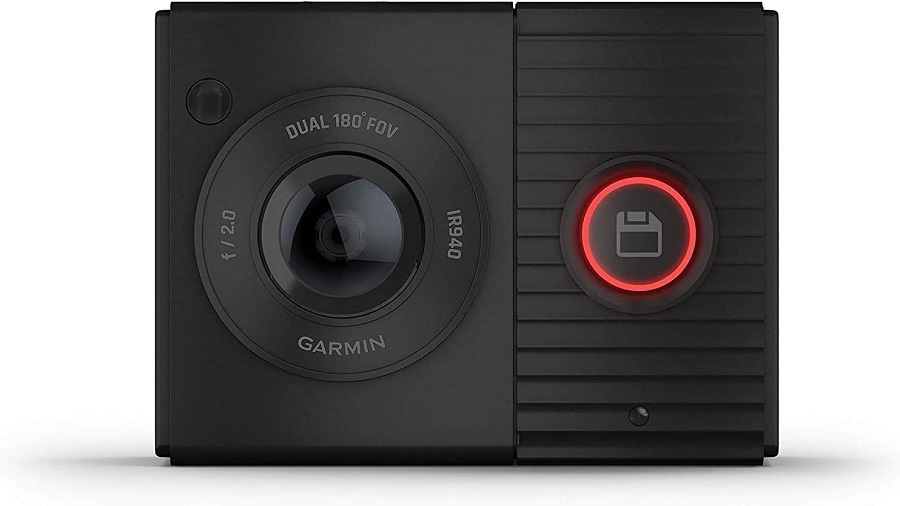
Garmin Dash Cam Tandem Compact
RRP: $299.99, buy now. £299.99, buy now.
As you’d expect from a big brand name like Garmin, this is more of a premium option in the world of dual car cameras. The two lenses (one pointed forwards, and one pointed back into the cabin) record in high quality 1440p at the front and 720p at the back, while WiFi connectivity allows for seamless file transfer to the Garmin smartphone app.
Night vision is included, as is incident detection and GPS, and there’s also a parking surveillance mode. You can even control the device through voice control if you like. Plus, if you’re concerned about cameras being too bulky, this impressive little machine is merely the size of an average car key.
Road Angel Halo View
RRP: £199.99, buy now. Not available in the US.
The Road Angel Halo view dual camera is very different to the rest of the products on this list. The Halo replaces your car’s standard rearview mirror, and as well as being able to function as a simple standard mirror, it’s also a 10-inch touchscreen which can relay video footage from the front or rear camera. You just have to swipe between them with your finger to change views!
The video quality is good – 2K/1440p from the front camera, and 1080p from the rear camera. Speaking of the rear camera, it is waterproof and intended to be mounted to the exterior of your car, also serving as a parking camera. Night vision tech is included, and there’s a Road Angel app too to easily access your recordings from.
How to buy the best dual cam set-up
Naturally, when it comes to cameras, picture quality is the one trait to rule them all. When buying a dash cam for your car, don’t settle for anything less than 1080p at the front and 720p at the rear (though if you can get 1080p all-round that’s a very worthwhile bonus). This is the sort of threshold where you’ll be able to pick out important details when needed. But for ultimate performance, aim for even higher resolutions if your budget allows. Refresh rate is also key, 60fps will give you a nice smooth video, but 30fps at a higher resolution is a compromise that some people are willing to make.
On top of that, consider how much functionality you want from your cameras. Do you want features like Parking Mode, audible driver aids, or connected apps? If you do, seek them out, if not, avoid them and save a bag of cash doing so.

